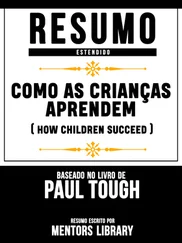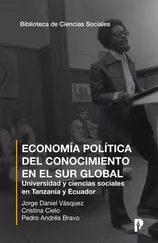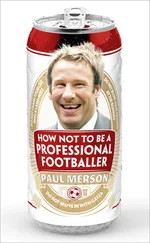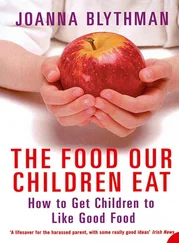In its most basic elements, Derrion Albert’s death in September of 2009 was not all that different from any of the dozens of other violent deaths of Chicago high-school students that year. But the fight and Albert’s killing were captured on video by a bystander, and that fall the video became first a YouTube sensation and then a cable-news fixture. Local and national media descended on Fenger. For weeks, the streets around the school were lined with TV satellite trucks, and prayer vigils and protests were held in front of the school. The U.S. attorney general, Eric Holder, came to meet with students. Then in October, Fenger made news again when three vicious gang fights broke out simultaneously on three separate floors of the school. Dozens of police cars arrived, five students were arrested, and the whole building was put on lockdown for three hours.
After the schoolwide brawl, Dozier instituted what she called a zero-tolerance policy for violent behavior and behavior that might lead to violence: If students threw up gang signs or exchanged gang handshakes in the hallway, Dozier gave them automatic ten-day suspensions. If they fought, she called the police and had them arrested, and then she did her best to expel them from Fenger permanently. When I started spending time at Fenger, more than a year after Albert’s death, the halls were generally quite orderly, though they certainly didn’t seem normal. There were always thick-armed security guards patrolling the hall; students couldn’t go anywhere without their IDs on Fenger lanyards around their necks, and when a student needed to go to the bathroom in the middle of class, she had to carry a giant hall pass, two feet long and bright yellow. Between classes, the synthesizer-laden theme from Beverly Hills Cop played on speakers in the hallways; students knew they had to make it to the next class before the last note sounded. Despite the firm rules, there were still disruptions; the first time I came to Fenger to interview Dozier, we were interrupted twice by shouts in the hallway, arguments that she had to rush off to help adjudicate.
Midway through her second year as principal, Dozier told me that she was beginning to feel that the most important tools at her disposal were ones that didn’t have much to do with classroom instruction. In the wake of Derrion Albert’s murder, Holder and Arne Duncan pledged $500,000 in federal money to set up afterschool programs in anger management and trauma counseling at Fenger, and the school began to refer to counseling not just students but their families as well. Dozier enrolled twenty-five of her most troubled students in an intensive mentoring program. She was looking for any kind of intervention that might address what now seemed to her to be the most pressing crisis at Fenger—not her students’ academic deficits, though those remained acute and distressing, but a deeper set of problems, born out of her students’ troubled and often traumatic home lives, that made it difficult for them to get through each day. “When I came into this job, I discounted questions like ‘What families do kids come from?’ and ‘What effect does poverty have on children?’” Dozier said to me one morning. “But since I started working at Fenger, my thinking has evolved.”
What effect does poverty have on children? Halfway across the country, this was the question Nadine Burke Harris was asking as well. But she was a doctor, not an educator, and so she approached the question from the perspective of her patients’ physical health. Since 2007, Burke Harris had been the lead pediatrician of the Bayview Child Health Center in the Bayview–Hunters Point neighborhood of San Francisco, a bleak industrial area tucked away in the city’s southeast corner that is home to some of the city’s biggest and most violent housing projects. When Burke Harris founded the clinic, she was a recent graduate of the Harvard School of Public Health, a fresh young idealist hired by the California Pacific Medical Center, a well-funded private hospital chain, to take on a vaguely defined but noble-sounding mission: to identify and address health disparities in the city of San Francisco. Those disparities were not hard to find, especially in Bayview–Hunters Point: the rate of hospitalization for congestive heart failure there was five times as high as it was in the Marina District, a few miles away. And before Burke Harris’s clinic opened, there was only one pediatrician in private practice in a community with more than ten thousand children.
Burke Harris had studied health disparities at Harvard, and she knew what the public-health playbook said you should do to remediate them: improve access to health care, especially primary care, for low-income families. When the clinic opened its doors, Burke Harris targeted the low-hanging fruit of pediatrics, the health issues where the disparities between rich and poor children were most obvious and best understood: asthma management, nutrition, vaccinations for diphtheria and whooping cough and tetanus. And in just a few months, she made significant headway. “It turned out to be surprisingly easy to get our immunization rates way up and to get our asthma hospitalization rates way down,” she told me when I first visited her clinic. And yet, she explained, “I felt like we weren’t actually addressing the roots of the disparity here. I mean, as far as I know, no child in this community has died of tetanus in a very, very long time.”
Burke Harris found herself in a situation much like Dozier’s. Here she was, in her dream job. She had ample resources, she was well trained, she was working hard—and yet she didn’t seem to be making much of a difference in the lives of the young people she was trying to help. They were still surrounded by violence and chaos, at home and in the streets, that was clearly taking a grave toll on them, both physically and emotionally. Many of the children she saw in the clinic seemed depressed or anxious, and some of them were downright traumatized, and the stress of their daily lives expressed itself in a variety of symptoms, from panic attacks to eating disorders to suicidal behavior. She sometimes felt less like a primary-care pediatrician and more like a battlefield surgeon, patching up her patients and sending them back to war.
Burke Harris went looking for answers, and her quest took her into a new and unfamiliar conversation about poverty and adversity, one that was taking place not in public-policy magazines and at political science symposiums but in medical journals and at neuroscience conferences. Gradually, Burke Harris became convinced of what had at first seemed a radical idea: that in neighborhoods like Bayview–Hunters Point and Roseland, many of the problems we generally think of as social issues—the province of economists and sociologists—are actually best analyzed and addressed on the molecular level, down deep in the realm of human biology.
Burke Harris’s journey began with a medical-journal article that Whitney Clarke, a psychologist on the clinic’s staff, dropped on her desk one day in 2008: “The Relationship of Adverse Childhood Experiences to Adult Health: Turning Gold into Lead.” The author was Vincent Felitti, the head of the department of preventive medicine at Kaiser Permanente, the giant health maintenance organization based in California, and the article described the Adverse Childhood Experiences study, commonly called the ACE study, that Felitti had conducted in the 1990s with Robert Anda, an epidemiologist at the Centers for Disease Control in Atlanta. When Burke Harris read the paper, she told me, something clicked: “The clouds parted,” she said with a smile. “Angels sang. It was like that scene at the end of The Matrix where Neo can see the whole universe bending and changing.”
Читать дальше
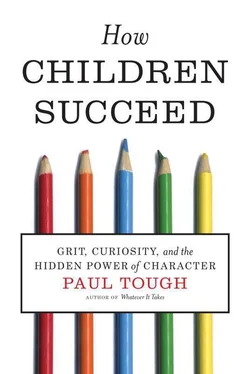

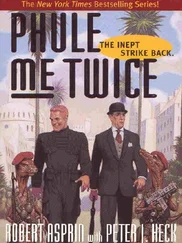
![Коринн МакКей - How to Succeed as a Freelance Translator [calibre 3.46.0]](/books/402693/korinn-makkej-how-to-succeed-as-a-freelance-transl-thumb.webp)


